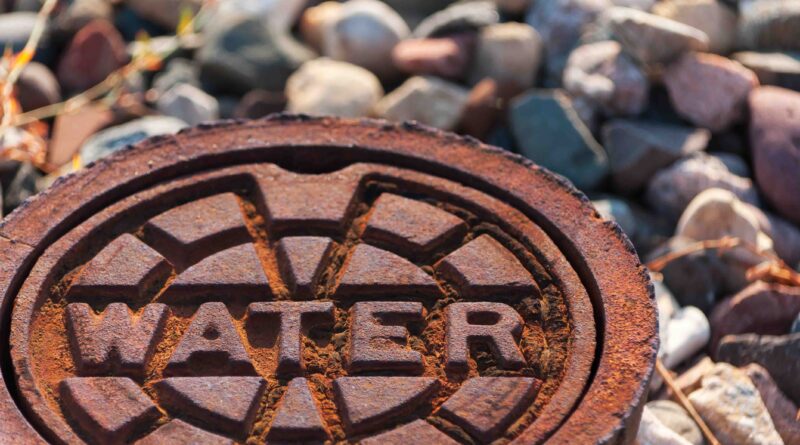The AI Interview: Brian Parsons, Director, Environmental & Water Resources Institute and Chief Sustainability Officer, American Society of Civil Engineers
ASCE executive gives his take on current challenges in relation to climate change, water and more
 American Infrastructure: For those of our readers who are unfamiliar, can you tell us about the Environmental & Water Resources Institute (EWRI) and its importance?
American Infrastructure: For those of our readers who are unfamiliar, can you tell us about the Environmental & Water Resources Institute (EWRI) and its importance?
Brian Parsons: EWRI has a primary vision – to advance water resources and environmental solutions to achieve a sustainable future. EWRI aids in this goal by providing for the technical, educational and professional needs of its members, and to serve the public in the use, conservation and protection of natural resources and in the enhancement of human well-being. This is done by: advancing knowledge and improving the understanding of relevant sciences; improving environmental and water resources practices; partnering with national and international organizations; and providing public policy input to governmental decision-makers.
As part of its capacity building and technology transfer initiatives, ASCE-EWRI collaborates with many organizations and universities to host conferences domestically and internationally, with an emphasis on developing nations.
EWRI is the content producer of the American Society of Civil Engineers’ (ASCE) water and environmental related journals, standards, manuals of practice and advises ASCE on subject matter related policies. The institute is home to more than 22,000 members, 22% of which are student members and 30% are less than 30 years old. Roughly 30% are on the opposite end of the spectrum, ranging between ages 46 and 65, so it is a very diverse range of professionals depending on their interests, career status and age. Our members represent several professional sectors, including government, academic/research, consulting firms, construction, military and professional and trade associations, clubs or libraries.
AI: What primary challenges does drought present? What can be done to combat these challenges?
BP: From my perspective, drought threatens our ability to use, conserve and protect natural resources and places our well-being at risk. It poses risks to our essential systems and forces us to rethink how we use water.
Drought creates problems with water scarcity, drinking water quality, food security, human health, air quality, sanitation and hygiene, fire risks and has significant commerce and societal economic consequences.
A relatively recent PBS NewsHour program titled “Drought’s impact on Mississippi River causes disruptions in shipping and agriculture” demonstrates examples of the negative consequences
of drought, and the consequences are significantly more severe in countries with low GDPs.
…strategies to combat drought include establishing priorities for water use, incentivizing conservation and collaborative agreements with regional agencies that use the same water supply…”
Drought affects our quality of life in all arenas—from reducing the possibility of recreation and tourism within the natural environment to affecting lifeline systems such as water supply and quality by changing water chemistry; water supply treatment costs can increase significantly, because of changes in the water chemistry, requiring removal of sediments and filtration.
There may even be impacts on population distributions, as drought can precipitate citizens of drought-stricken regions to become climate migrants, within the boundaries of a nation.
Many approaches are being deployed to combat drought. The Southern Nevada Water Authority is an example of an agency that is effective in implementing policies to address drought (not solve drought). Communities must look at integrated, one water cycle approaches to managing water resources, and there are many lessons to be learned from the concepts of the circular economy, which are transferable and assist with strategies to confront drought, such as water reuse and blending.
Additionally, strategies to combat drought include establishing priorities for water use, incentivizing conservation and collaborative agreements with regional agencies that use the same water supply, all to collaboratively manage the limited resource efficiently. Considering that agriculture is a major user of water, efficiencies in irrigation is key, but also efficiencies in agriculture, power generation, industrial, municipal and individuals are also key.
AI: With the on-going and growing presence of climate change, what is necessary to sustain and increase water availability and access for our nation’s non-potable and potable needs?
BP: There’s a variety of actions and policies that could improve water availability despite omnipresent threats to the natural environment. These include: public education campaigns; incentives for users to reduce consumption and penalties for inefficient use; collaboration amongst the water user sectors for consistent approaches; political will and policies; planning on how to capture stormwater overflows and stormwater management plans; water recycling/reuse; and integrating the consequences of climate change and population projections into our water resource management planning
One example includes recent incorporation of climate and population projections in Southern Nevada, which resulted in an investment of $8.7 billion to construct a third intake in Lake Mead, two years before a drought would have resulted in loss of water supply for the region. They successfully accounted for changes in the hydrology and population in the region and averted a drought disaster.
Using smart technologies to optimize the efficient use of water in irrigation, locate leaks in water supply distribution systems and operate flood control measures are also key strategies.
AI: What effects might the impending California snowpack melting have on the environment? What does this say about our stormwater infrastructure?
BP: Too rapid melting of course results in flooding; it’s predicted that the snowmelt will be higher than in previous years. Municipal Southwest infrastructure is not designed for this type of flow. Rather, larger scale water impoundments are the type of infrastructure designed to manage snowpack melt.
We also don’t want this influx of water to impoundments to change conservationist behavior that has been cultivated by water managers.
Losing some of the snowpack is also a concern, as evaporation loss represents a loss of contribution to the water supply and some of the snowpack in California drains to the sea and thus this could also result in diminished recharge of water supply sources.
AI: What resources are available from ASCE for those involved in water infrastructure?
BP: The American Water Works Association (AWWA), Water Environment Federation (WEF) and American Public Works Association (APWA) and ASCE from the NGO community. National Oceanic and Atmospheric Administration’s (NOAA) climate and weather data will inform sizing of water infrastructure.
This set of three standards:
ASCE 45, 46, and 47 Standard Guidelines for the Design, Installation and Operation and Maintenance of Urban Stormwater Systems, establishes guidelines for the design, installation, operation and maintenance of urban stormwater systems. The set offers comprehensive guidance and is a useful tool for the nation’s airports, roads and other transportation systems. Maintaining stormwater systems is especially important as communities look to mitigate the impacts of flooding, because legacy systems were generally not built to accommodate changing rainfall patterns and intensity.
This set of three standards:
ASCE 62, 63, and 64 Standard Guidelines for the Design, Installation, and Operation and Maintenance of Stormwater Impoundment, establishes guidelines for the design, construction, operation and maintenance of stormwater impoundments, which are man-made structures designed to capture and store stormwater runoff from heavy rainfall events. Stormwater impoundments can help mitigate flooding and erosion by reducing the volume and rate of water flowing into nearby streams, rivers or other bodies of water.
This text:
Water Treatment Plant Design, 5th Edition – Published jointly by AWWA and ASCE is another valuable resource.
AI: Are there any new initiatives EWRI is excited about?
BP: Nature-based solutions are driving innovative concepts with sustainability in mind. The ASCE/NOAA MOU is triggering EWRI to develop standards related to scaling climate data for use by the engineering community.
Collaboration with federal agencies are being sought with the Federal Emergency Management Agency (FEMA), and we’re hosting a series of climate workshops involving the full scope of stakeholders so that we better understand the gaps in resources and can respond to the needs of the engineering community responsible for designing and implementing climate-ready infrastructure.
AI: Is there anything else you would like to add?
BP: The allocation of Inflation Reduction Act Funding will assist our efforts moving forward, however steady investment for ongoing maintenance and replacement will be needed.





